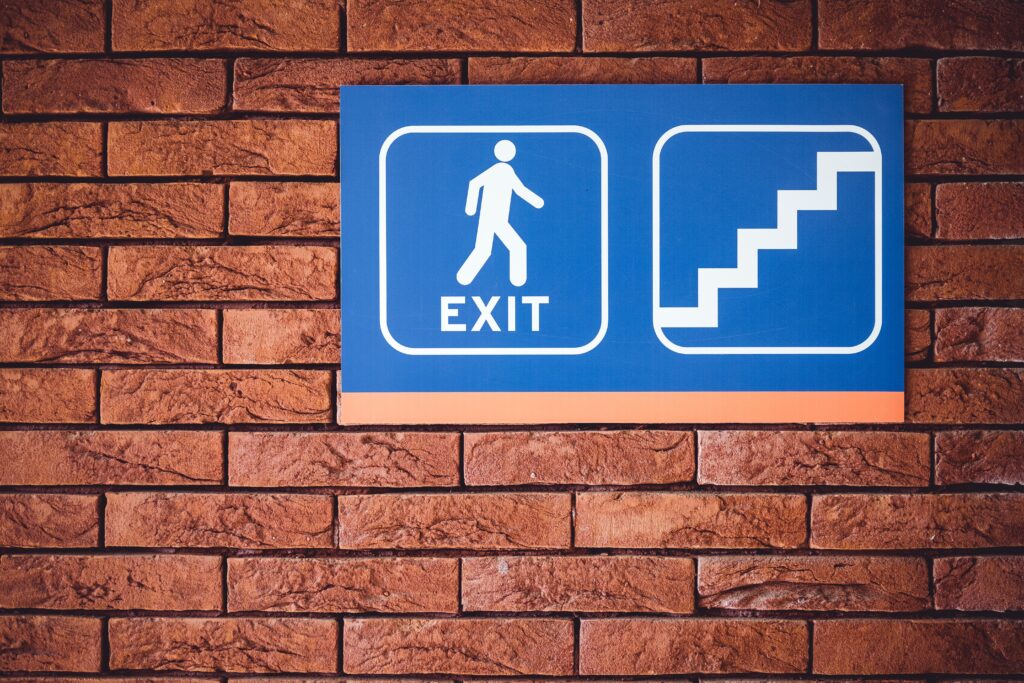
If the COVID-19 pandemic, wildfires, hurricanes, and other recent calamities have taught us anything, it’s that emergencies can happen unexpectedly and have devastating impacts on communities. National Preparedness Month is an annual campaign held every September.
Sponsored by the Federal Emergency Management Agency (FEMA), National Preparedness Month educates and empowers the American public to prepare for, respond to, and mitigate emergencies, including natural and man-made disasters. One often overlooked aspect is the importance of addressing mobility challenges and ensuring elderly are safe, whether it’s ensuring accessible evacuation routes or integrating mobility solutions that can facilitate quicker and more efficient disaster response.The primary objective is to promote family and community disaster planning, emphasizing the need for improvement now and throughout the year.
The yearly average of such events has increased, with the last five years averaging 18 costly disasters compared to an older average of 8.1 events. So far in 2023, the U.S. has experienced 23 major weather and climate disasters, each costing over $1 billion. These disasters led to 253 deaths and had substantial economic impacts.
National Centers for Environmental Information
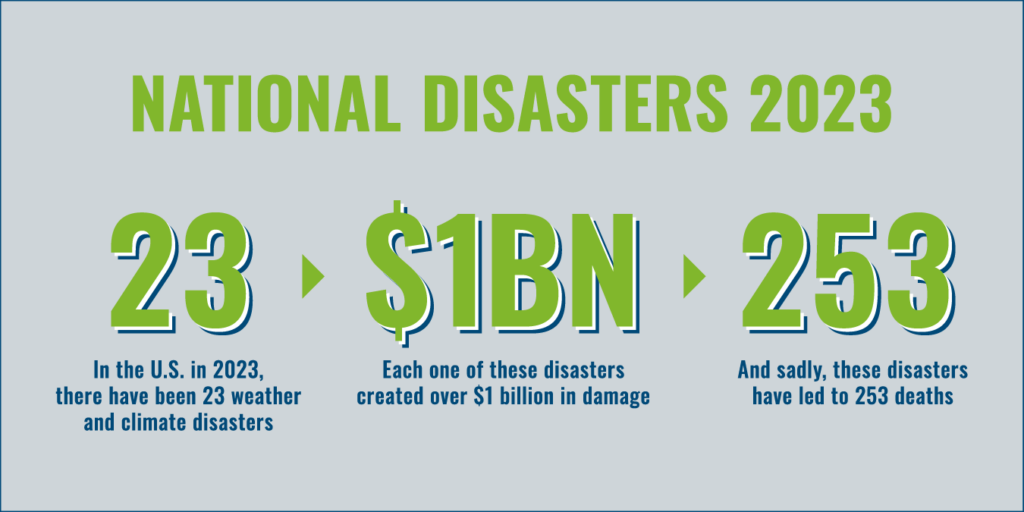
The brunt of these emergencies is often felt by vulnerable populations, such as the elderly and individuals with mobility challenges. This makes it all the more crucial to be prepared, not just to weather the storm but to recover and rebuild in its aftermath.
Next Day Access offers invaluable resources for those facing mobility challenges, providing an extra layer of security and peace of mind in times of disaster. Being prepared is a collective responsibility, and it’s essential that we take steps to protect all members of our community. Keep reading for easy at-home emergency preparedness tips and innovative solutions that cater to specific needs of those with mobility challenges, along with practical advice on how to take control of your safety in “1, 2, 3” easy steps.
National Preparedness Month Starts at Home
While government agencies like FEMA provide invaluable resources and guidelines, real preparedness starts at home. It begins with small steps, like creating a disaster supplies kit, knowing your evacuation route, having a plan in place for pets and family members, and ensuring anyone facing mobility challenges has the proper accessibility solutions.
In a world increasingly prone to emergency and disasters, preparedness is a shared responsibility that requires us all to take proactive steps. Imagine needing to evacuate a home swiftly when someone has limited mobility; a stair lift can be a lifeline. Also consider the benefits of home elevators during situations that might make stairs impassable. For older adults, features like fall prevention can make a critical difference in their ability to stay safe and mobile during chaotic circumstances.
Mobility Solutions and National Preparedness Month
In an emergency or disaster, mobility is crucial. Whether it’s a flood, fire, or other form of disaster, moving quickly can be a matter of life and death. Below are several accessibility solutions designed to aid in quick and safe mobility.
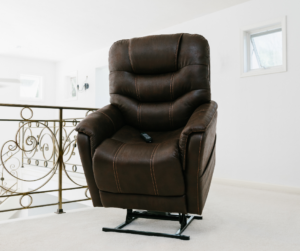
Lift Chairs: Ensuring Movement Ease During Emergencies
Lift chairs are not just comfort furniture; they facilitate vertical movement for seniors or those with limited mobility. During an emergency, these chairs can help users rise to their feet faster and with less pain, making evacuation faster.
According to the Centers for Disease Control and Prevention (CDC), falls are the leading cause of injury among older adults. Having a lift chair can aid in prevention and offer a safer way to stand up during critical times.
Learn more about Lift Chairs:
Vertical Platform Lift: An Essential Tool for Quick Evacuation
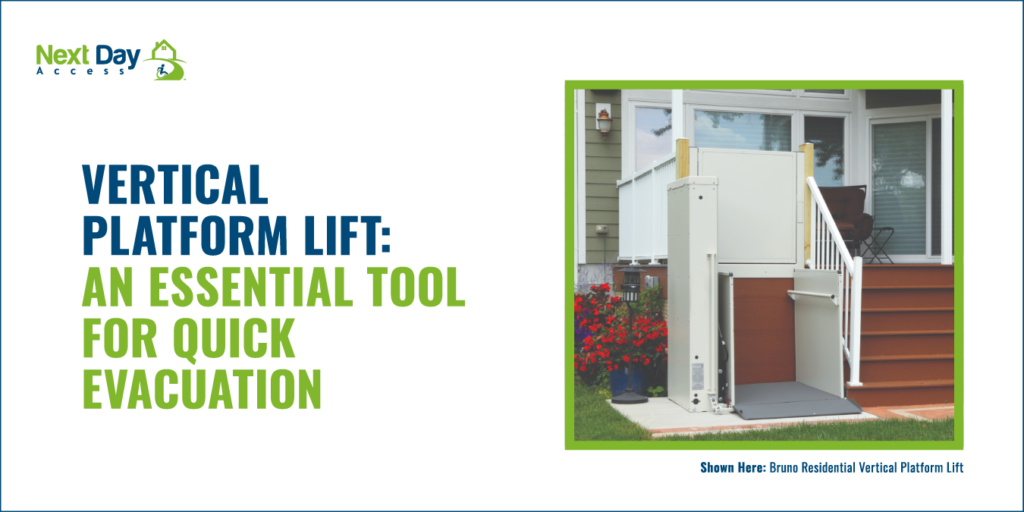
These lifts can be invaluable for wheelchair users in multi-story homes or buildings. In the event of a disaster where elevators are non-operational, a vertical platform lift can serve as a quick and safe alternative to descending floors.
Vertical platform lifts are usually ADA-compliant and meet safety regulations, making them a secure choice for emergency preparedness.
Learn more about Vertical Platform Lifts:
Wheelchair Car Lift: How it Simplifies Emergency Transportation
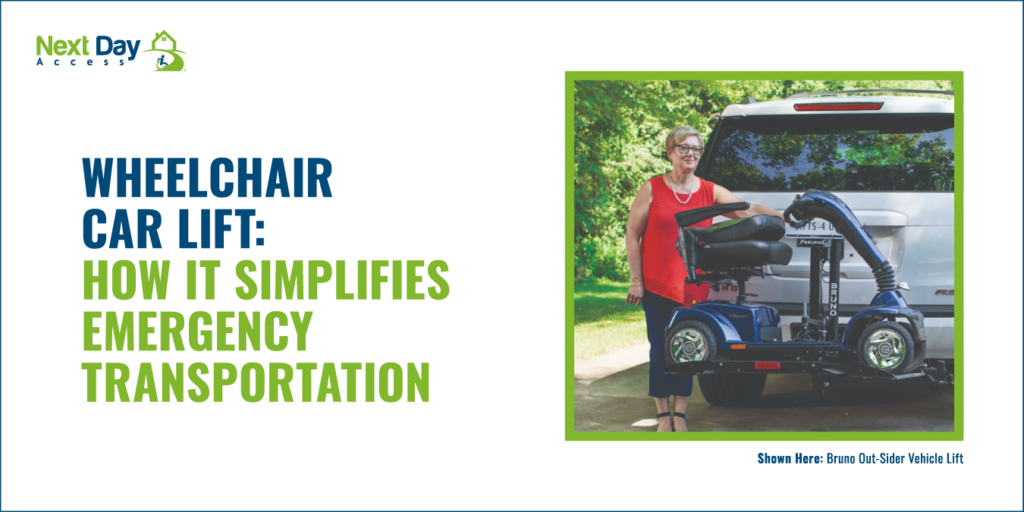
In an emergency, evacuating an area by car may be necessary. A wheelchair car lift simplifies the process of getting a wheelchair into and out of a vehicle. This makes it quicker to leave an area under threat.
Wheelchair car lifts are not just for personal vehicles; they can be integrated into community emergency vehicles or transport services, providing a comprehensive solution for those with mobility challenges.
Learn More about Vehicle Lifts:
By integrating Next Day Access mobility products into an emergency preparedness plan, individuals and communities can greatly enhance their ability to respond effectively when disasters strike.
ADA Accessibility and Fall Prevention: Making Safe Spaces in Emergencies
When it comes to emergency-be it natural disasters like hurricanes and floods or other urgent situations— National Preparedness Month reminds us that preparedness is key. Among the many considerations of preparation, ADA compliance and fall prevention stand out as particularly crucial. Not only are these aspects mandated by law, but they serve the practical purpose of making spaces safer and more accessible during times of crisis.
The Role of ADA Accessibility in Emergency Preparedness
The Americans with Disabilities Act (ADA) sets forth a variety of guidelines to make public and commercial spaces accessible for individuals with disabilities. These guidelines cover everything from door widths and ramp inclines to elevator controls and bathroom setups.
According to the CDC, one in four adults in the United States has some type of disability. For these individuals, ADA-compliant spaces can mean the difference between life and death during emergencies.
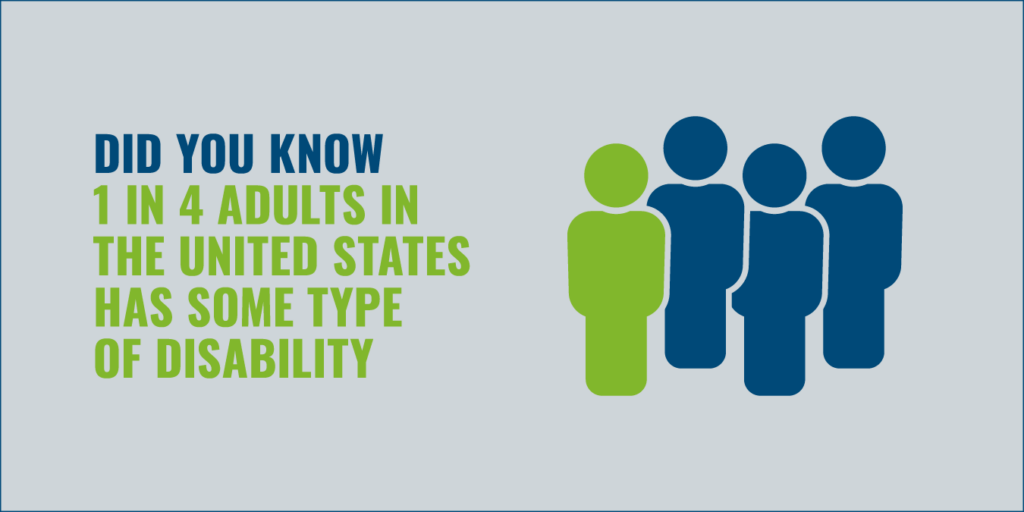
During an emergency, adhering to ADA guidelines can have immediate safety implications. For instance, wider doorways and ramps facilitate quicker and smoother evacuations for wheelchair users. Properly marked and easily accessible exits can make all the difference in panic times.
Next Day Access offers a range of ADA-compliant products such as wheelchair ramps, home elevators, and stair lifts.
Fall Prevention: A Necessity During Stressful Times
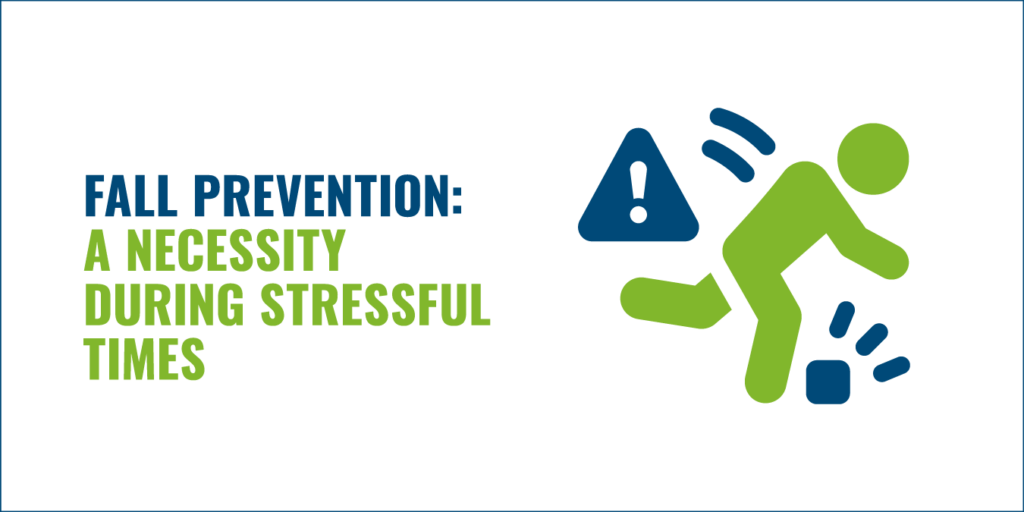
Falls are one of the leading causes of injury, especially among the elderly. During an emergency, the risk of falls increases due to hurried movements, unfamiliar environments, or temporary setups like evacuation centers.
Fall Prevention Techniques and Products
- Non-Slip Mats: Simple solutions like placing non-slip mats can provide added safety during emergencies.
- Lift Chairs: Next Day Access’s range of lift chairs can help those with mobility challenges move more safely and comfortably during urgent situations, reducing falls risk.
- Handrails and Grab Bars: Installing these in crucial areas like bathrooms and staircases can provide necessary support during hurried movements.
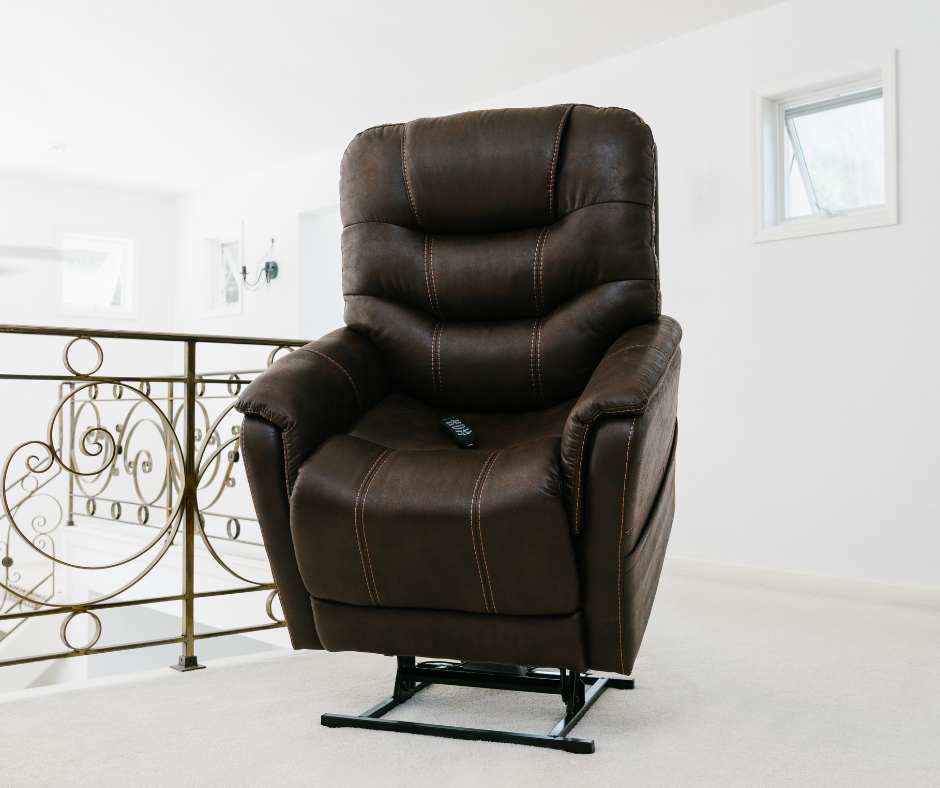
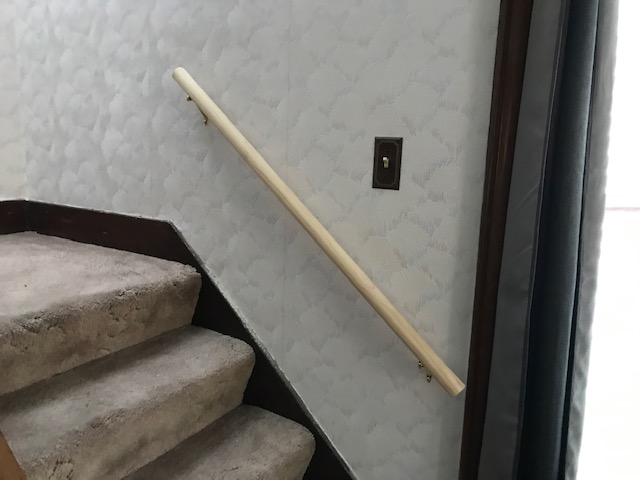
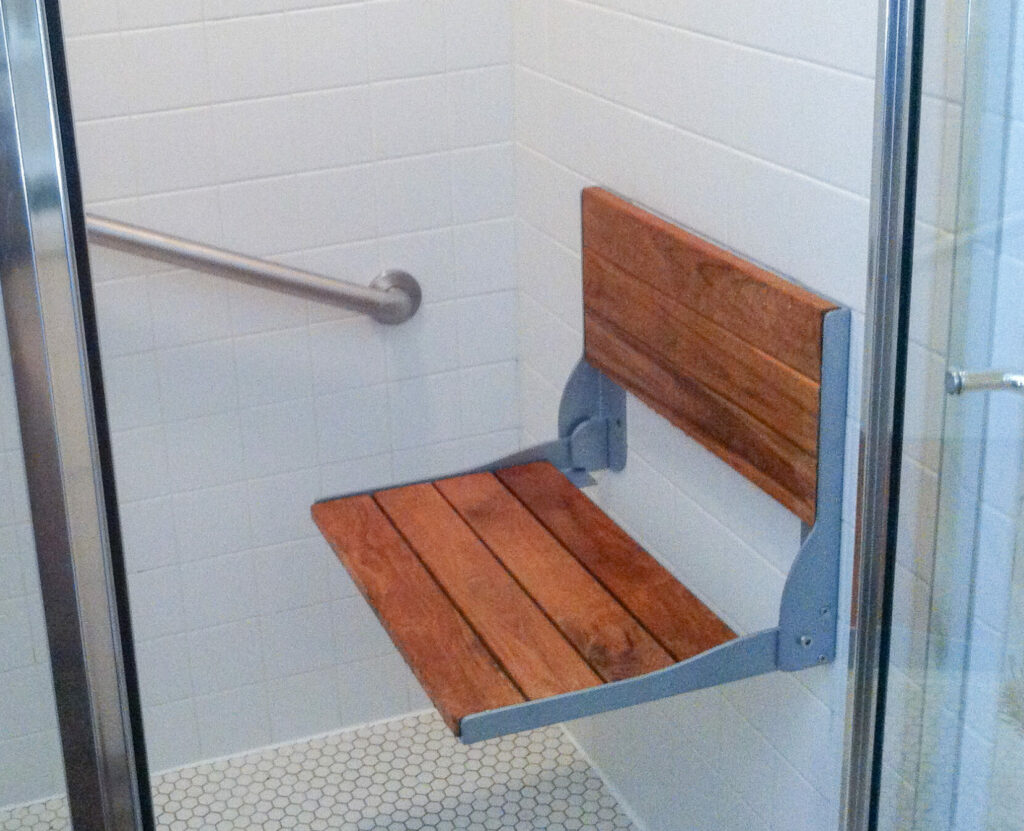
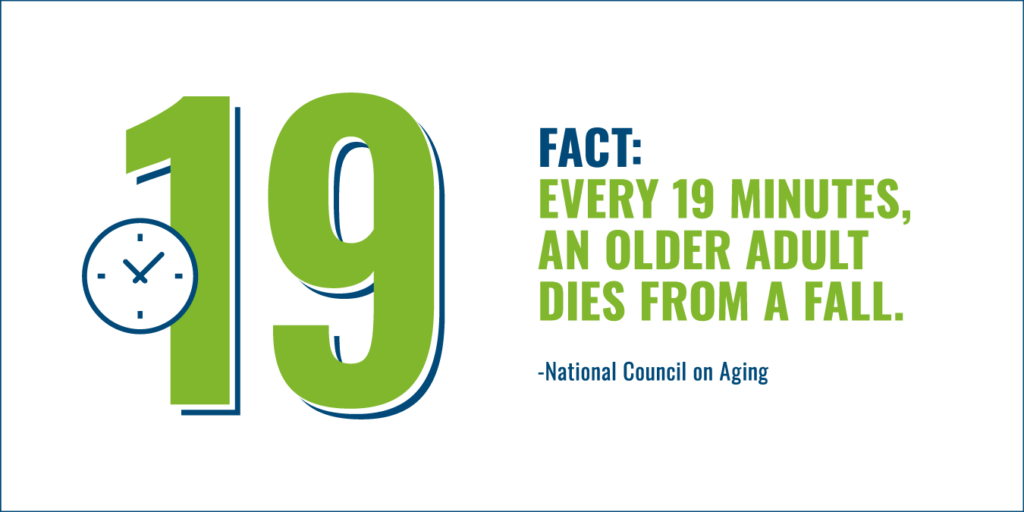
The National Council on Aging reports that every 19 minutes, an older adult dies from a fall. Fall prevention measures are not just comfort features; they are life-saving necessities.
Make a Plan: 1, 2, 3 Easy Steps for Emergency Preparedness
In light of the escalating frequency and magnitude of natural disasters, the urgency to prepare ourselves and our families has never been greater. Ever since its inception in 2003, National Preparedness Month serves as a reminder of the unpredictability of emergencies.
This year, the spotlight is on older adults, with the theme “Take Control in 1, 2, 3,” focusing on three pivotal steps: assessing individual needs, developing an actionable plan, and building a robust support network.
Step 1 – Assess Your Unique Needs
Begin by assessing the mobility requirements of each family member. Take note of limitations such as difficulty walking, wheelchair usage, or assisted lifts. Create a list of essential medications, specialized equipment, or services you need. The CDC recommends an assessment as the first step in emergency preparedness.
Self-Assessment Questions:
- What is the likelihood of natural hazards in your region?
- What channels will you use for emergency warnings and alerts?
- Do you have viable options for evacuating?
- Have you amassed sufficient supplies to last during extended power outages?
- Do you have dependents, pets, or medical needs that warrant special attention?
With a range of products like lift chairs, vertical lifts, and wheelchair ramps, Next Day Access can tailor your home to meet your mobility needs. Customizing your home in this way ensures that you can exit quickly in an emergency. This is vital given that FEMA says you might only have 2-3 minutes to escape a fire.
Step 2 – Build a Customized Plan
After assessing your needs, your next move is to craft a plan tailored to those unique requirements. Your plan is your lifeline; it dictates your actions when disaster strikes.
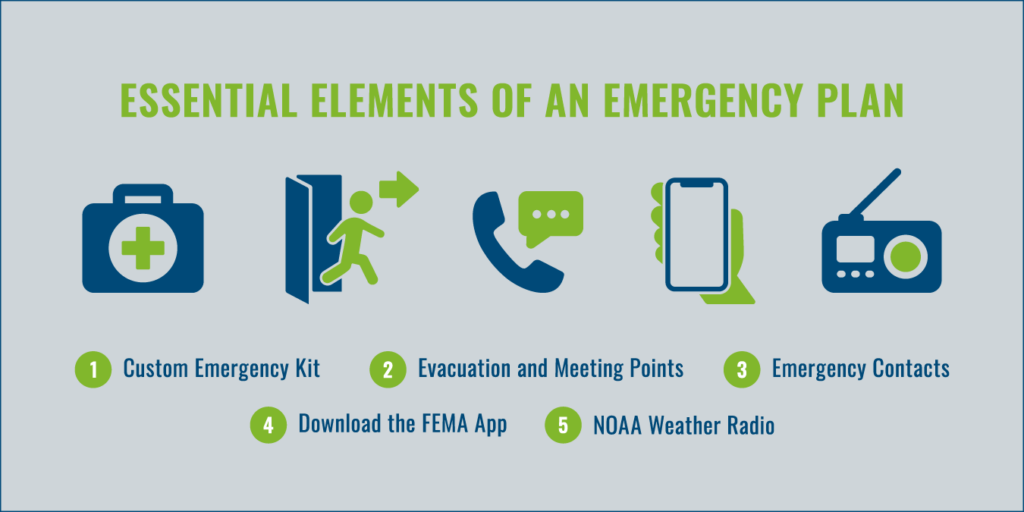
Essential Elements of an Emergency Plan:
- Custom Emergency Kit: Alongside basics like sustenance and hydration, your kit should include prescription medicine, backup power for essential medical devices, and crucial family documents. The Department of Homeland Security suggests keeping enough supplies to last for at least 72 hours.
- Evacuation and Meeting Points: Identify and practice using all potential exits from your home. For example, practice opening windows and doors, and practicing using an escape ladder if necessary. Utilize community resources or local fire departments to ensure your routes are viable. Pre-arrange a gathering spot for your family if you’re separated during a disaster.
- Emergency Contacts: Make a thorough list of family, friends, and emergency service numbers. Store them in multiple formats—printed, digital, and even handwritten.
- If you own a cell phone download the FEMA app for real-time alerts from the National Weather Service, emergency tips, and disaster resources. It also provides the location of emergency shelters and has the functionality to help you contact emergency services.
- A NOAA Weather Radio is a must-have to monitor severe weather conditions in your area. It can operate on batteries, hand-crank, or solar power, ensuring you stay informed even if the power goes out.
Step 3 – Leverage Your Support Network
Your third critical step involves establishing a reliable support network. These are the people you can count on when the unexpected occurs. Identify a network of neighbors, friends, and family who can assist you in an emergency. According to the American Red Cross, 48% of Americans lack a designated meeting spot, which is a crucial component of a robust support network.
Building and Utilizing Your Support Network:
- Identify reliable individuals who can assist you during an emergency.
- Make sure they’re aware of your unique needs and equipped to help.
- Share emergency supplies and key information with trustworthy contacts.
Did you know? Products like patient lifts can be operated by non-medical members of your support network, making it easier to receive help during an emergency. This also encourages more people to be part of your support network, knowing they can effectively assist you without specialized training.
Preparedness for Pet and Service Animal Owners During Emergencies
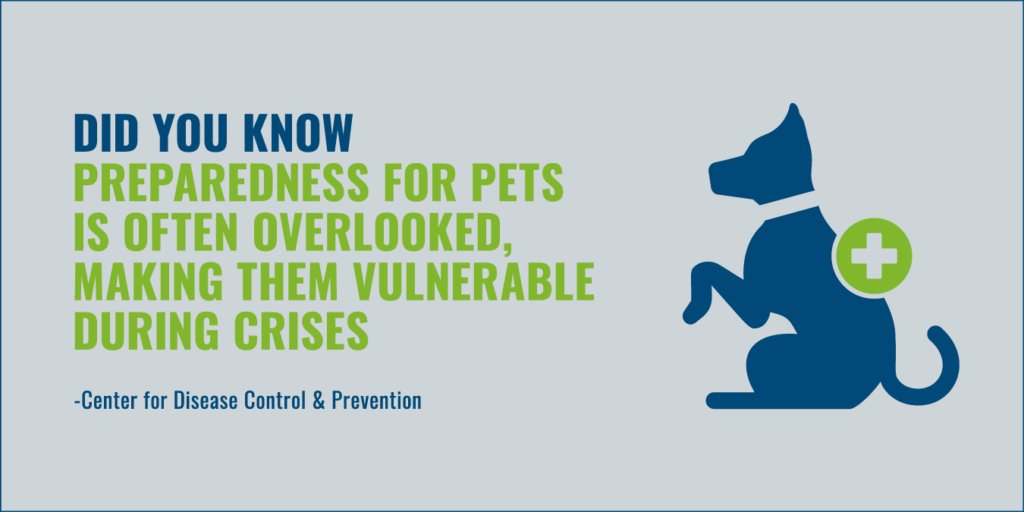
This National Preparedness Month, it’s important to remember that emergencies don’t discriminate; they impact everyone in their path, human and animal alike. Pets and service animals are more than just companions; they are lifelines for many. Incorporating their needs into your emergency preparedness plan is not an option—it’s a necessity.
Given this, Next Day Access extends its scope to spotlight our four-legged family members, who often double as life-changing service animals. Here’s how to ensure their safety with a simple three-step plan.
Step 1 – Identify and Tag: The First Line of Defense
Pet and service animal preparedness begins with indisputable identification. Consider microchipping your animal and ensure ID tags are updated. This is particularly critical as, according to the American Veterinary Medical Association, microchipped dogs are more than twice as likely to be reunited with their families.
Key Identification Questions:
- Is the microchip information updated?
- Are the ID tags current and secure?
Step 2 – Equip and Prepare: Tailor-Made Emergency Kits
Just as you assemble emergency kits for family members, pets and service animals should have their own. These should include food, water, leashes, and medicines.
Key Considerations:
- How much food and water will your pet need?
- Are there any specific medications or medical supplies?
Next Day Access provides a range of mobility solutions that are pet-friendly, like platform lifts, ensuring that your service animals can assist you efficiently during an emergency.
Step 3 – Build a Resilient Support Ecosystem
Pre-plan with neighbors, friends, and relatives to ensure that someone can take care of your pet if you are unable.
Accessible Safe Havens:
Make a list of pet-friendly, accessible shelters or hotels. The U.S. Federal Emergency Management Agency suggests having a list prepared as it can make all the difference.
Did you know? According to the CDC, preparedness for pets is often overlooked, making them vulnerable during crises. By adopting this three-step plan, you’re contributing to a safer, more resilient future for everyone in your household, four-legged members included.
Additional Prep for the Elderly & Mobility-Impaired
Emergencies can be unsettling for anyone, but they’re especially precarious for seniors and individuals with mobility challenges. These populations are often the most vulnerable and may require specialized planning. Here’s how to improve your emergency preparedness by focusing on three primary areas.
Step 1 – Identify and Prioritize Specialized Needs
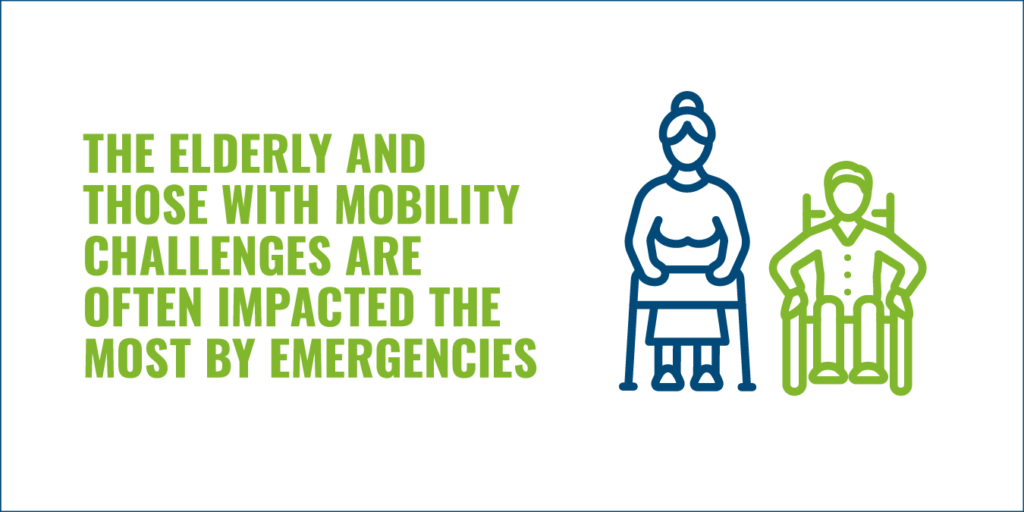
An evaluation of any special needs or challenges is the first step. Whether it is medical equipment, mobility assistance, or essential medications, these should be documented and planned.
Key Questions for Assessment:
- What specific medical equipment or medications are critical?
- Is special transportation needed in case of an emergency?
Next Day Access offers a wide range of mobility solutions, like stairlifts and portable ramps. These solutions can be essential in emergency situations where quick mobility is crucial.
Step 2 – Create an Individualized Emergency Plan
Your emergency kit should include personalized items, such as prescription medications, power backups for medical devices, and crucial documentation. Develop a comprehensive list of emergency contacts, doctors, and healthcare providers and ensure it’s accessible in multiple formats—digital, printed, and even handwritten for ease of access.
How Next Day Access Can Help:
Products can be customizable to individual needs, such as adjustable beds that can quickly be moved in the event of an emergency, providing more than just comfort but potentially lifesaving utility.
Step 3 – Strengthen Your Support Network
Beyond your inner circle, for those with mobility challenges it’s vital to inform neighbors, caregivers, and local emergency services about the special needs in your household.
Regular Drills:
Practice makes perfect. Regular emergency drills will ensure that everyone knows what to do and how to use specialized equipment. From bathroom accessibility solutions to barrier-free showers, Next Day Access helps ensure that your home remains safe and accessible, even when circumstances are not.
Did you know? A study published by the National Institute of Health suggests that older adults who are prepared for emergencies experience less anxiety and better health outcomes post-disaster.
A New Era for National Preparedness Month
President Joe Biden’s proclamation of September 2023 as National Preparedness Month represents a pivotal moment in how the United States addresses emergency readiness. The White House is now formally recognizing the value and necessity of preparedness at the community, state, and national levels. It’s not just about government agencies being ready, but also about empowering every citizen, specifically elderly, to take control of their own safety.
With the renewed emphasis on empowering older adults and vulnerable communities, the responsibility is on each of us to prioritize preparedness. This is not just for ourselves but for those who need it the most.
Next Day Access stands as a vital partner in this effort, aiming to make safety accessible to everyone. Providing tangible solutions for those with mobility challenges in order to execute on FEMA’s ‘Take Control in 1, 2, 3’ framework —from vertical platform lifts to patient lifts—this is not just about everyday convenience; it’s about creating an environment of readiness, especially crucial for those with mobility challenges.
Let’s not wait for the next disaster to catch us off guard. Take control today and make emergency preparedness a lifestyle, not just a one-off task. Your safety, and the safety of those you care about, depends on it.
Contact Next Day Access to help in preparing for emergencies for loved ones in your life with mobility challenges.





